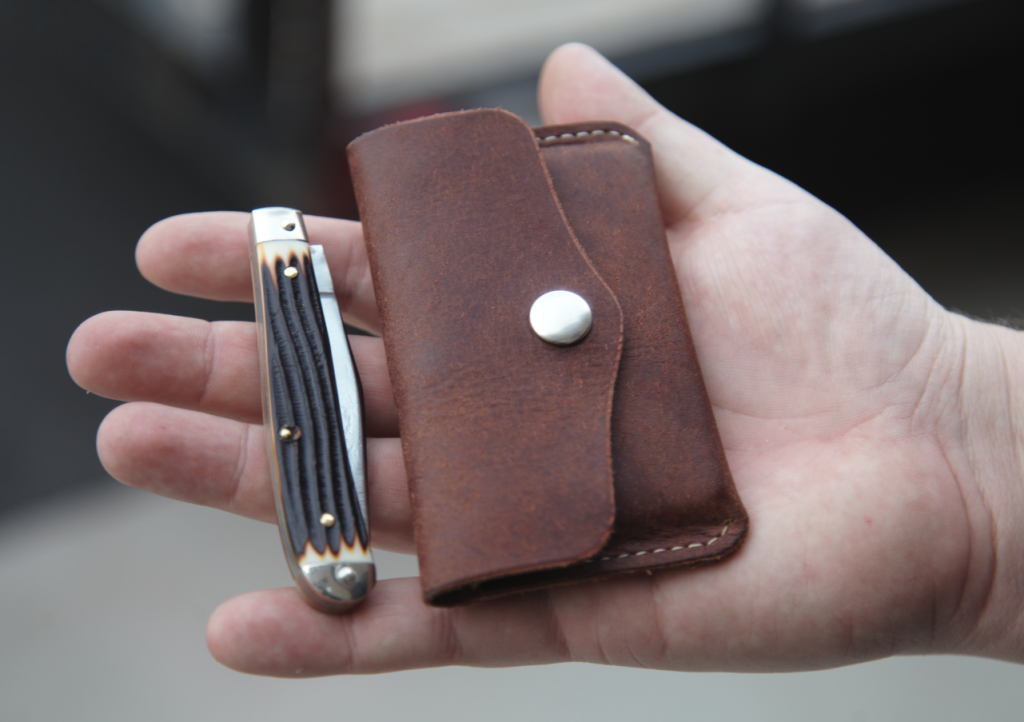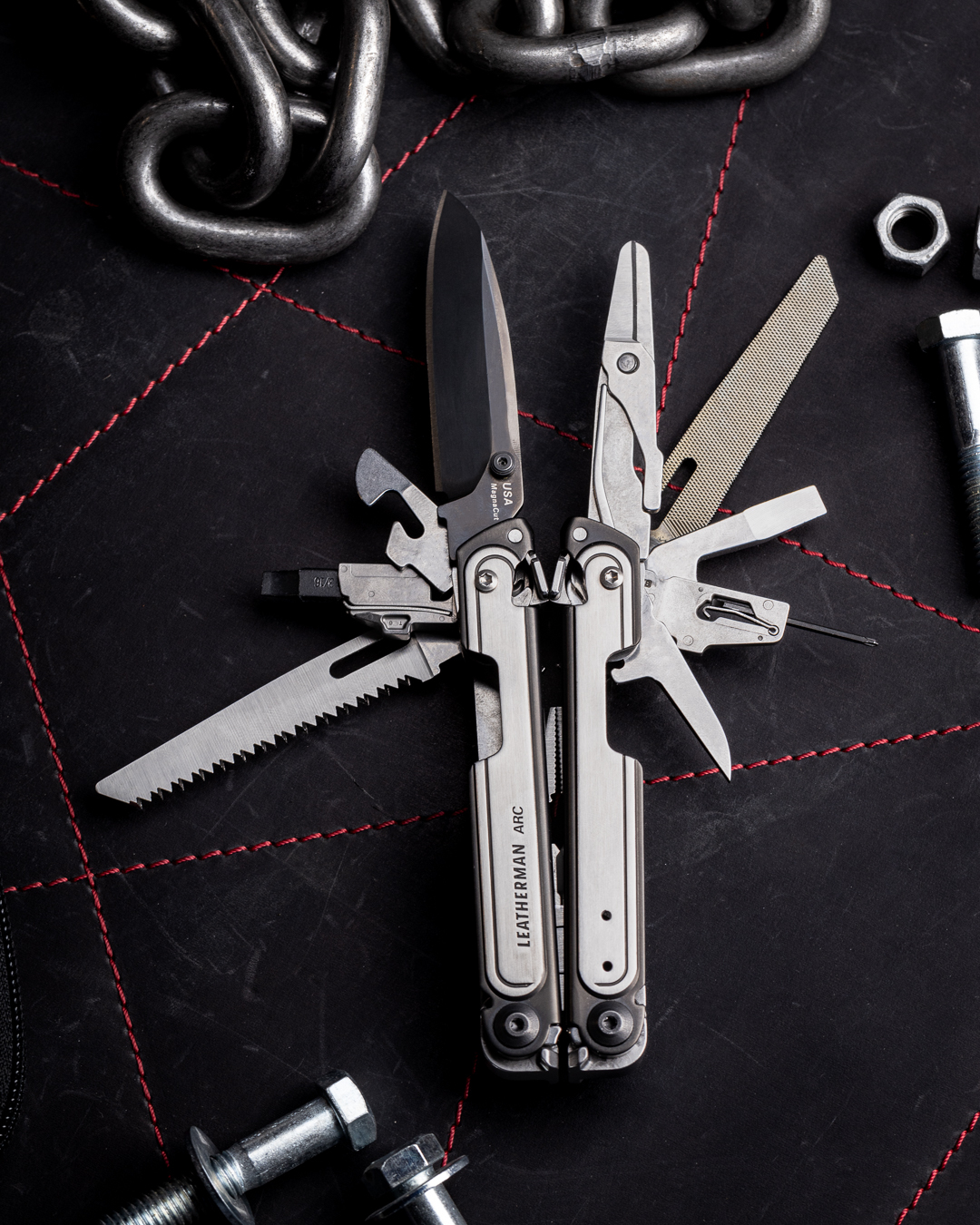Traditional knives are some of the most collectible, interesting, and historically significant knives out there, but they’re in a class of their own. To speak of traditional knives is almost like speaking another language. Here, we’ll teach you how to spot a traditional knife, what goes into a good one, and why one might be good for you!
What is a Traditional Knife?
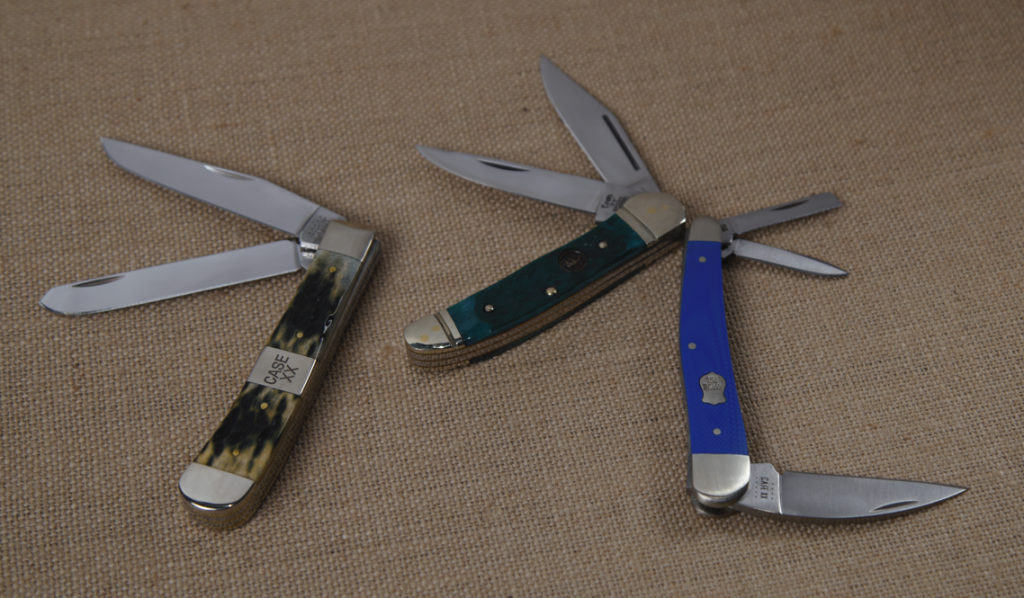
This is a simple enough question, but there are two ways to answer it, and both are useful. The first complies better with the strict definition of “tradition,” and asserts that a “traditional knife” is a knife that complies with tradition. By this definition, the Finnish Puukko, the Japanese Kiridashi, the Alaskan Ulu, and others are all “traditional knives.”
The second, and what we usually mean when we speak of “traditional knives,” speaks more to knives made in a time and place, specifically the Americas during the period of Western expansion and industrialization from the mid-19th to the mid-20th centuries. This was the first time in history that mass knife production existed, and it filled the Western world with quality, pocketable cutlery. The knife industry has modernized significantly in recent years with new mechanisms and high-tech materials, but those early production knives, “traditional knives,” are still as popular as ever. Brands like Case, Boker, and Buck still carry the banner, and they don’t show any signs of stopping.
Traditional knives have come in many shapes and sizes, however there are some designs that took hold better than others. We call these designs “patterns,” and just about every company in the traditional knife niche makes them. We’ll talk more about them later, but these patterns still inspire modern knives. Now you can get a Trapper, just like Granddad carried, but yours has a Bohler M390 blade, a ball bearing pivot, a titanium frame lock, and an Arctic Storm Carbon Fiber handle. We call knives like these “modern traditionals,” and they’re really cool.
Ultimately, a traditional knife is trying to fit in rather than stand out
So, to boil it down to one sentence, “traditional knives” are knives made with materials, mechanisms, and designs popularized in America between the mid-19th and mid-20th centuries.
Alright, let’s dig a little deeper!
How to Spot a Traditional Knife
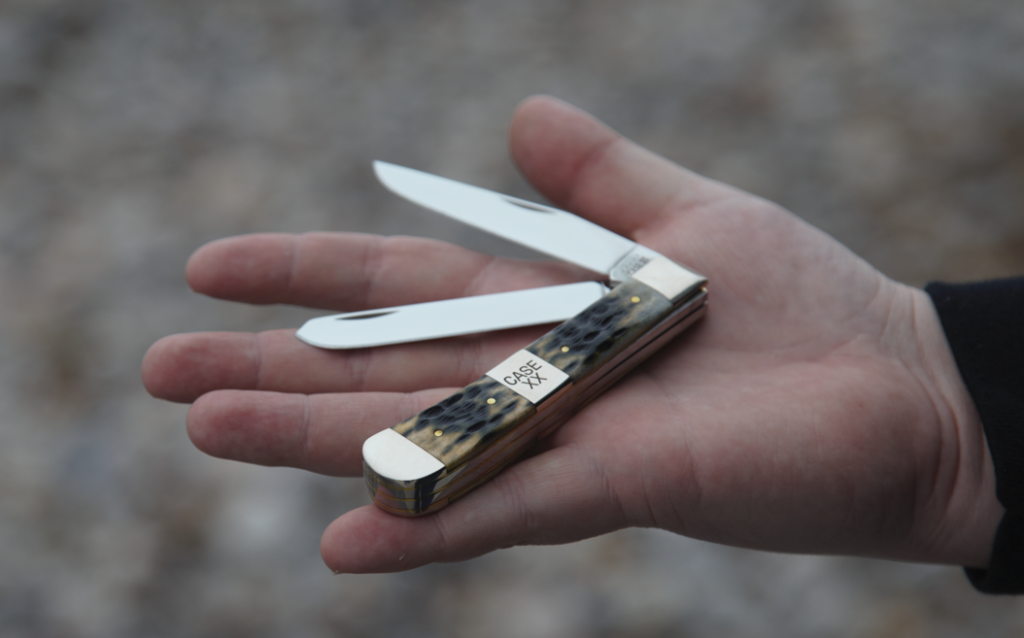
Traditional knives take many forms, but many share some characteristics we’ll discuss here. Bear in mind that no one of these features makes a traditional knife.
First, mechanism. The Slip Joint is a mechanism that relies on a spring along the spine of the knife to detain the knife open, closed, and sometimes in the middle (called a half-stop). We don’t call it a lock because the blade is not locked open or closed. To close it, simply press on the spine of the knife until it closes. Traditional knives use many mechanisms, but by far the most common is the slip joint, although lockbacks are common as well. Today, more sophisticated mechanisms, locks, and construction are the norm. Slip joint knives are made for only two reasons: a throwback to traditional knives, or to be legal in more places. You can usually tell which they’re doing by the knife’s design.
Speaking of design, that is another identifier of a traditional knife. Traditional knife designs are clean, simple, and utilitarian. They aren’t exotic, complicated, or faddish. Traditional knifemakers tend to be bold with top-level craftsmanship and rare materials rather than divergent designs. Traditional knives are, for lack of a better word, period pieces. Thus, they seek to fit in with the period rather than stand out.

Traditional knives tend to use old-school hardware and materials. Pins instead of screws, spacers instead of standoffs, and brass liners instead of steel. Most traditional knife handles use wood, bone, antler, and other natural materials, with brass or silver bolsters. Their blades are often made of simple carbon or stainless steels, and on special occasions, Damascus. TORX hardware, powder steels, and high-tech laminates occasionally make their way into modern-traditional crossovers, but they tend to stay in the 21st century of knifemaking. Traditional knives are old-school, so they stick to old-school materials and construction.

Traditional Knives to Know
Whether you want to carry a traditional knife or not, understanding the traditional knife canon can help you understand a lot of the modern knife world. Many of them left a lasting mark on the industry that can still be seen over a century later! Here, we’ll break down some of the most influential traditional knife patterns that had the largest impact on the industry. There are many more than you see here, but this is a great place to start!
Trapper

While it was made for trappers braving the untamed American West in search of the mighty Beaver, the Trapper pattern had just the right features to bring joy to literally tens of millions of Americans, and it still does today. It has a simple handle that affords the user a variety of grips and two blades: a clip point blade for general use, and a spay blade for skinning and other precise cuts. It offers a lot of utility in a pocketable package, and many modern knives take cues from its iconic design. A true historic knife!
Stockman

Made for cowboys, ranchers, and other livestock workers, the Stockman is outfitted with three blades. The large clip point is for general use, the sheepsfoot is great for harder tasks, and the spay blade is for turning bulls into steers. It’s a handy tool, and it’s especially nice because a ranch hand can carry it all day, every day. Problems with livestock are often large, severe, and need immediate attention. Say go to the pasture and you find a bloated cow on the ground writhing in pain. A vet would be best, but you can make do with your Stockman!
By the way, that is a real problem that ranchers deal with. You can look it up if you want, but don’t plan on eating anytime soon.
Barlow

Not everyone goes on daring outdoor adventures or raises livestock, but everyone needs a good knife. That’s where the Barlow comes in – it’s a small, pocketable knife with about as basic a design as is possible. It has a simple, symmetrical handle with a long bolster and a single blade, usually a clip point. Barlows were carried by lawyers, teachers, bookkeepers, and other folks who didn’t need the larger, harder-working knives for their jobs. They had enough cutting power to open packaging, prepare quills, sharpen pencils, and slice steak, but left the harder work to other tools. Even today, people who don’t need a hard-working knife opt for the Barlow for its unbeatable class and ease of carry!
Swayback

The Swayback is said to be one of the greatest gentleman’s knives ever made. Why call it a gentleman’s knife? Because it is the perfect accessory for the lifestyle of the gentleman! It’s small and non-threatening, and oozes class. The knife gets its name from the backward “sway,” or curve, that makes the hand naturally want to hold the knife with the edge toward the user. That makes slicing and peeling food, cutting cigars, and removing champagne foil easy. Swaybacks tend to be rather small, so they won’t print in the pockets of slacks or dinner jackets. If ever there was a knife that belonged in a boardroom, it was a Swayback!
Folding Hunter

There isn’t a hunter alive who wouldn’t love to bring an entire butcher block, apron, hanger, etc. to process game in the field, but that simply isn’t realistic. Hunting often means miles of trekking into the backcountry, where ounces become pounds and pounds become pain. The best compromise for many was, and still is, the Folding Hunter. Traditionally it’s a slip joint with a clip point blade and a skinner blade, however that all got shaken up in 1963. That’s when Buck Knives released the single-bladed Buck 110 Folding Hunter, complete with the strongest lockback mechanism the industry had ever seen. In both formats, the Folding Hunter is still among the most popular traditional knives today.
Toothpick

The Toothpick, or as some call it the Texas Toothpick, is a very slim knife. It has its origins in the Deep South, a modification of the French Laguiole knife. The Laguiole is still a relevant knife design, most often used as a folding steak knife. The Toothpick can slide into the same role, but it’s also handy for a myriad of other small, tight jobs like digging out slivers, deboning fish, and yes, picking teeth.
Whittler
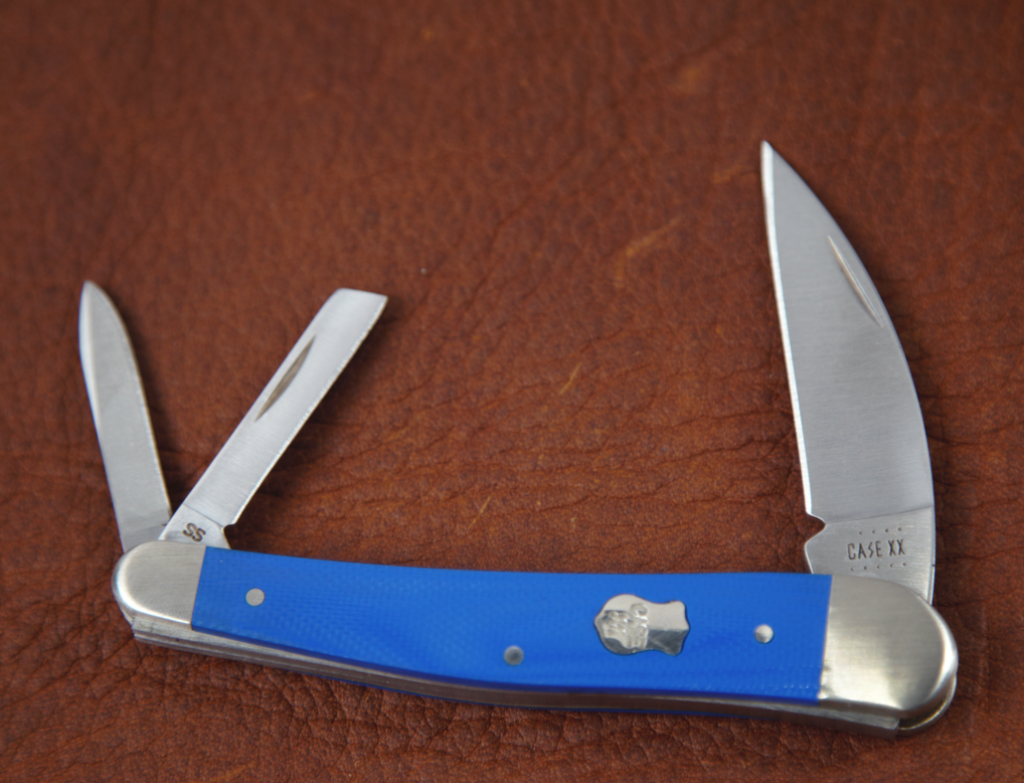
Whittling is the act of carving wood artistically, and to do it well, multiple blades are needed. To that end, many professional carvers will have many knives, but a simpler option is to carry a Whittler. On one pivot, it has a Wharncliffe blade for doing the bulk of the cutting. On the other side, a small coping blade helps make straight edges, and a pen blade helps carve precise details. The Whittler is a great pocketknife for the camper because it’s not any trouble to carry, but it can provide hours of good fun for everything from sharpening sticks to re-creating Michelangelo’s David.
Traditional Blade Styles
Traditional pocket knives have their own set of blades to choose from, each for a different purpose. I’ll describe the most common ones here.
Clip Point – for general cutting use. Pointy tip for piercing, slight belly for slicing. Common on many styles.
Drop Point – for general cutting use. Deeper belly in the tip, excellent for slicing. Common on hunting knives.
Spear Point – For general use. Not especially pointy, not great for piercing. Common on Swiss Army Knives.
Sheepsfoot – For hard cuts. Has a straight edge and a spine that rounds off at the tip to make piercing impossible.
Wharncliffe – For wood carving. A straight edge that comes to a needle-like point. Common on whittling knives.
Pen – a small, thin spear-point blade. Made for preparing quills. Common on smaller, gentleman-style knives.
Spay – a straight edge with an abrupt belly near the tip. Great for skinning, spaying, and neutering. Common on Trapper and Stockman patterns.
Coping – A straight edge, straight spine, and abrupt, squared-off tip. Useful for finish woodworking. Common on whittling knives.
Big Names in Traditional Knives

Traditional knives have had some giants in the mix over the years. Many of the people below are members of the Cutlery Hall of Fame. Each of them has more history than this article could do justice. Feel free to research each of them at greater length. You’ll be better for it!
Henry Baer – First president of Schrade knives, and the namesake of the Uncle Henry line.
Al Buck – With his father Hoyt, built Buck Knives into what it is. Designed the 110 Folding Hunter.
Tony Bose – Custom traditional knifemaker. Designed the Lanny, which has since become iconic.
Bill Ruple – Custom traditional knifemaker. Trains many of the best traditional makers today.
Michael Walker – Custom maker. Started with traditionals, but later invented the Liner Lock. Many modern traditionals, and other modern knives, use this mechanism.
William Russel Case – Started Case Knives with his sons. Many knife companies have lineage to Case.
Hermann and Robert Boker – turned Boker from a small German family operation to large-scale knifemaking.
Jared Oeser – custom knifemaker specializing in high-end traditional knives. His customs sell for thousands.
Enrique Pena – a leading designer of modern traditional knives.
Joseph Opinel – Designed the Opinel knife, complete with revolutionary ring lock, a favorite of Pablo Picasso.
Karl Elsener I – created Victorinox, and the iconic Swiss Army Knife. Carl Elsener IV now runs the company.
Why You Should Carry a Traditional Knife

Legality
There are a lot of great reasons to carry a traditional pocket knife, first being legality. I have a hunch that back in 1958, when Congress passed the infamous Federal Switchblade Act, legislators wrote the law so that they didn’t ban the knives that they were all carrying – traditional folders. I have my opinion on the law they made (spoiler alert, it’s not great), but it is our duty to respect it. For all you law-abiding citizens out there, you can get a lot of cutting performance out of a traditional pocket knife. And so long as you use it properly and don’t carry it to secure areas, a traditional knife will never become the subject of legal scrutiny.
Style
Traditional knives are also stylish, and more versatile in style than just about any other knife. Many knife collectors will have a specific knife to go with their grubby work clothes, a dressy folder for their suit, and a knife for every outfit in between. Traditional folders, on the other hand, look just as at home in a pair on concrete-caked jeans as they do in a velvet dinner jacket. That means you can carry your knife every single day regardless of your outfit, which will make you less likely to lose it too!

Durability
I recently went on a tour of the Buck Knives factory, where a large portion of the world’s premium traditional folders are made. I saw a huge, skilled, and efficient team creating thousands of knives daily, and a small warranty department consisting of three employees. That got me thinking – how can hundreds of knifemakers keep up with insane demand all while only three people, who are usually ahead of schedule, keep up with all warranty claims? The answer is simple: traditional knives don’t break. Their pinned construction doesn’t let users disassemble and lose pieces, their old-school materials are tough-as-nails, and their proven designs can tolerate hard use, and even abuse. That’s why my wife’s grandpa, who is knee-deep in his 90’s, has carried the Queen Cutlery pocket knife he got for his 8th birthday every day since.
Sentiment
When he showed me that knife, he asked me if it would be worth anything. I told him that it probably didn’t have much monetary value, but he probably had a son or a grandson to whom that knife would be priceless. The quality of traditional pocket knives makes them excellent family heirlooms. My wife’s grandfather’s knife has seen a world war, numerous construction projects, hundreds of camping trips, a career in carpentry, and everything else a lifetime can dish it, but it’s still got a lot of life in it. That knife could easily last my 4-year-old, his great-grandson, his entire life too. And what a great family treasure it would be!
Versatility
Perhaps the greatest single advantage many traditional folders offer is multiple blades. No matter how well-made a blade is, it is confined to its own dimensions, geometry, and properties. On a modern folder, when your blade is dull, you’re pretty much hosed. But if you’re carrying a Trapper, just close the knife and open your other razor-sharp blade! If you’re having a hard time doing a certain job with the tip of your knife, just open another and give that a try! If you’re doing something that requires a ton of detail, maybe switch to a smaller blade for greater control. With a traditional, you have options!
Why You Should Not Carry a Traditional Knife

Make no mistake – traditional knives are awesome, and I believe there should be at least one in every knife collection. But there are no solutions in this world, only tradeoffs, and traditional folders have their share of downsides.
Dated Design
First, they are limited by an era’s technology. Materials, mechanisms, and small parts construction have all taken great strides in the last half century, and you’re missing a lot of those benefits on traditional knives. Yes, “modern traditionals” combine the designs of yesteryear with the materials and mechanisms of today. Some people love them, saying they’re a luxury throwback. Others say that the use of modern materials ought to justify a modern design. Luckily, both camps respect the other, and occasionally dabble with each other. If modern traditionals sound like your speed, check out cool brands like Pena, Jack Wolf, and LionSteel.
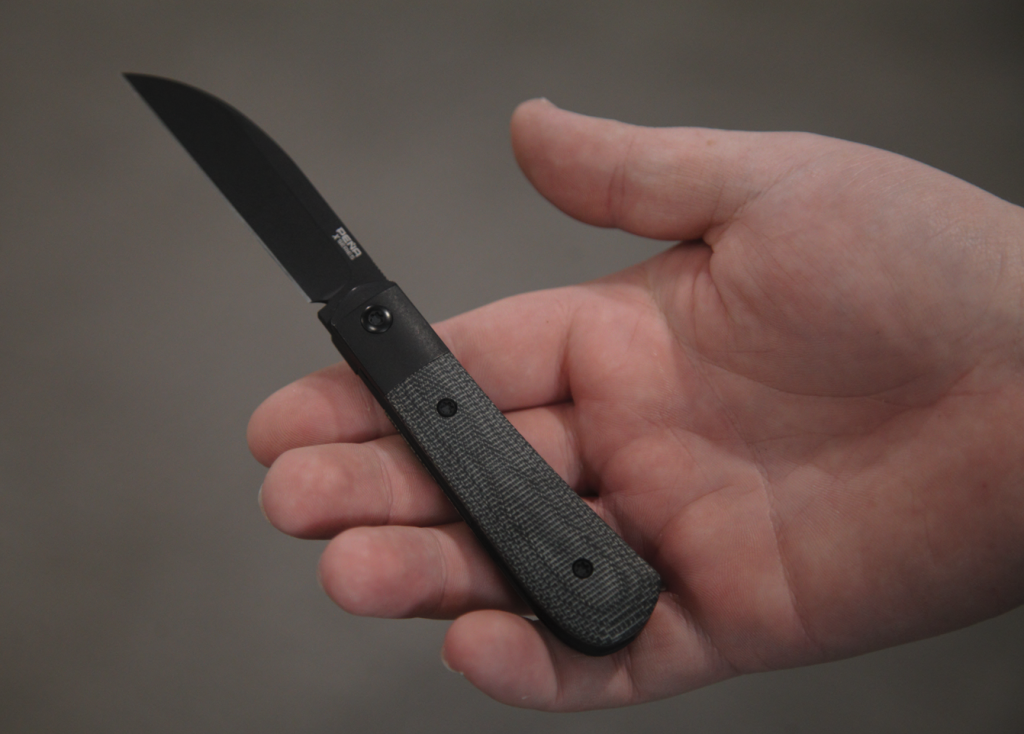
Safety
No matter how you swing it, slip joints do not lock open. Enough pressure on the spine will make it close. I have dabbled in slip joints, and here’s what I can tell you: I’ve never been bothered by the non-locking nature of the knife. If I need to push on the spine, doing so with the knife closed is usually functional. What bothers me is the action of opening and closing the knife. Unlike a modern lock, which fully breaks contact with the blade while operating, slip joints always apply pressure to the blade. That means during operation, your razor-sharp blade has a spring pushing on it, and it will cut you without remorse at even the tiniest mistake. This has earned me a few scars, and it almost made my coworker lose a finger. If you’re careful, it’s not a problem. But modern folders require a lot less care to operate safely.
The notion that non-locking folders are somehow safer is hogwash.
Style
Traditional folders are old-school. For some, that’s a great reason to carry one. For others, it’s a stylistic choice that isn’t “straight bussin’ no cap,” if you catch my drift. If that describes you, never fear. There is a world of modern knives that will fit your groove, vibe, aesthetic, or whatever the kids are saying these days.
Let the Tradition Continue
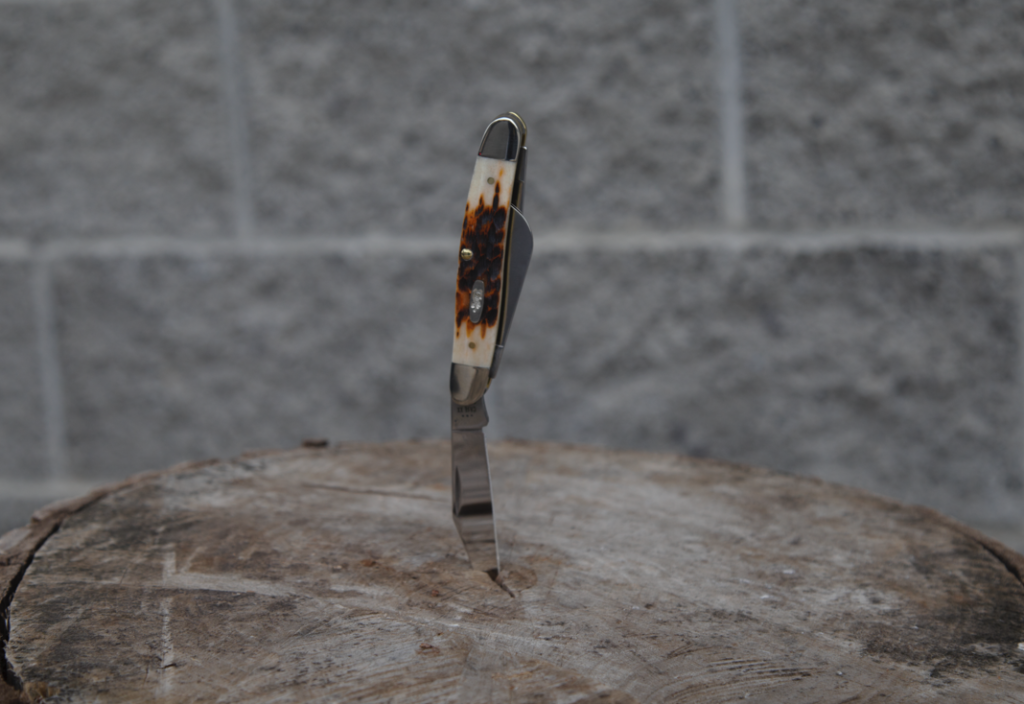
I will not lie – traditional knives are not my favorite knives. I prefer locks, one-hand openers, and soup-du-jour blade steels. But I have deep respect for the traditional knife. As Isaac Newton would say, if any knifemaker has seen further, it is by standing on the shoulders of giants. The giants who came before, who built the production knife industry, are traditional knifemakers. Their work was groundbreaking, and you can see their fingerprints on even the most modern, high-speed-low-drag knives today. And while they may not be my favorite, the world is a better place because of Traditional Knives, and it would be a crying shame if there were no more of them. To that end, I still collect a few myself, and when I’m feeling nostalgic, I’ll throw one in my pocket. And you know what? A traditional knife cuts just as well for me as it did for my great-great-granddad.
